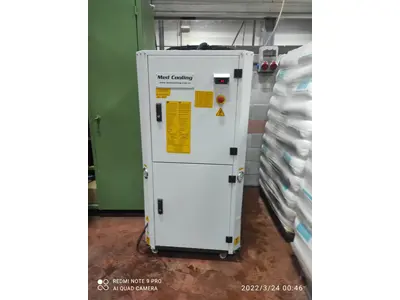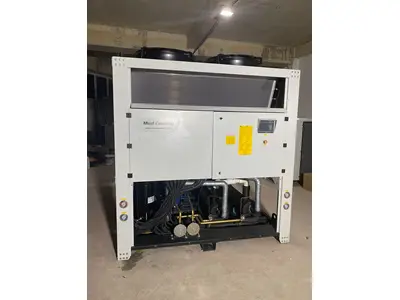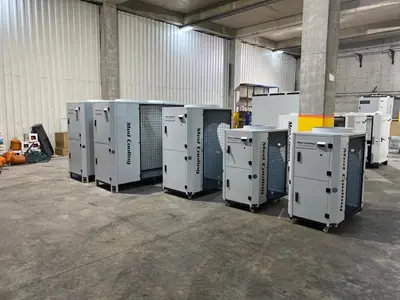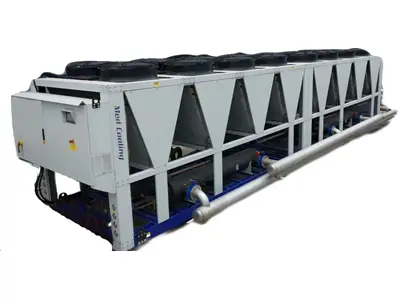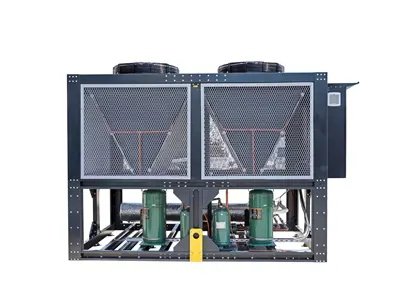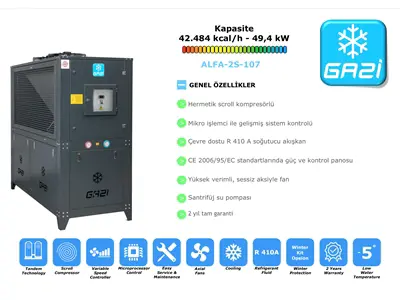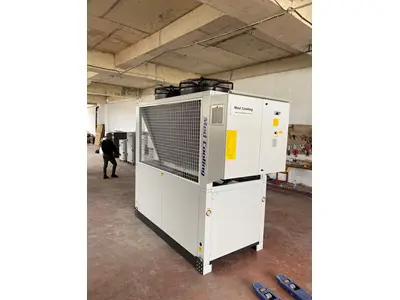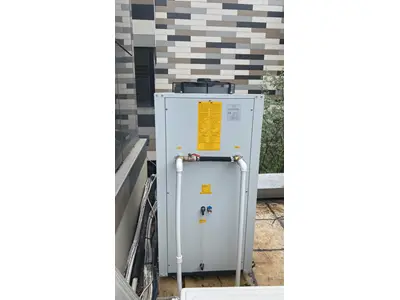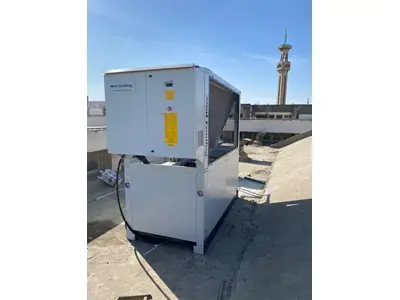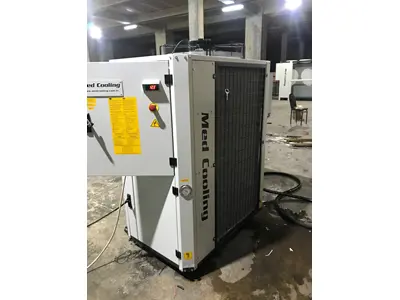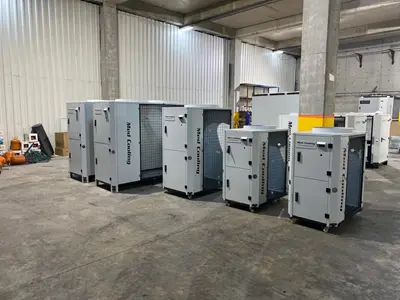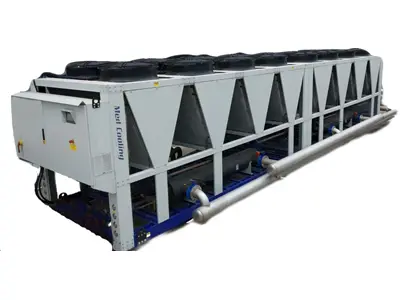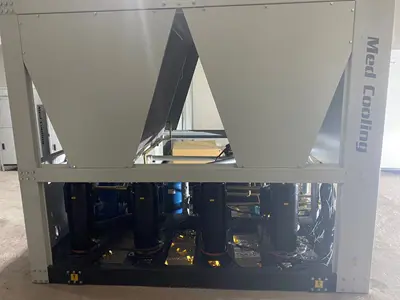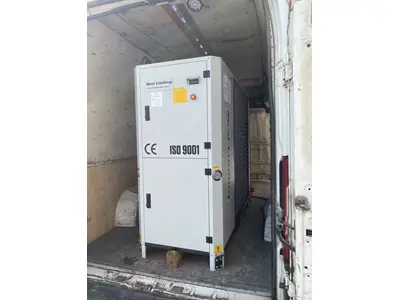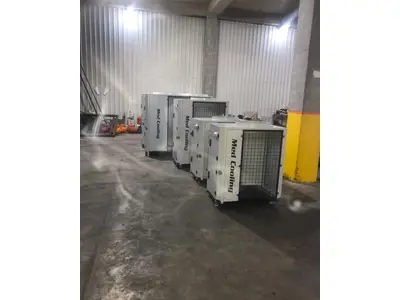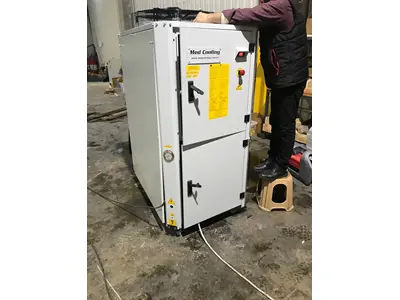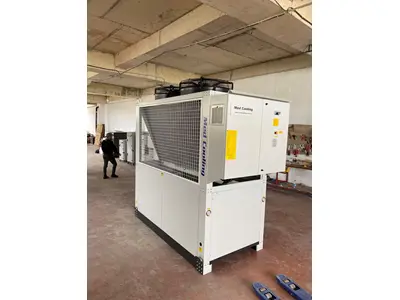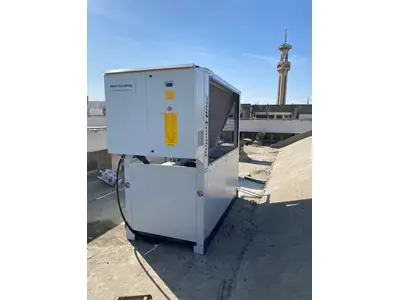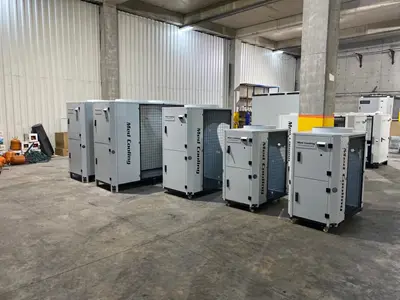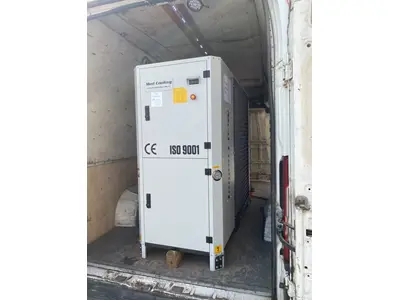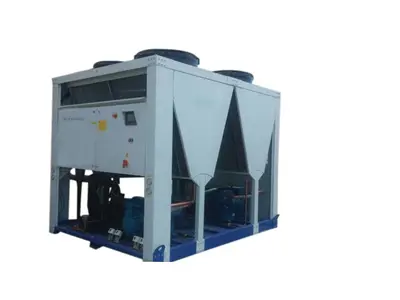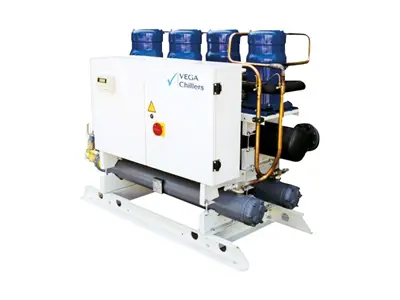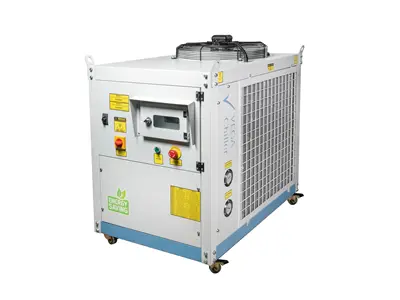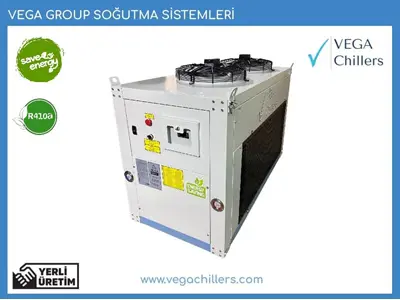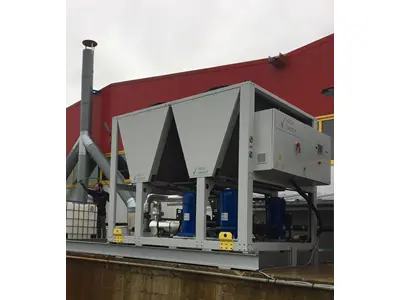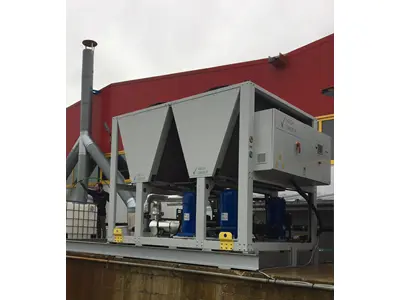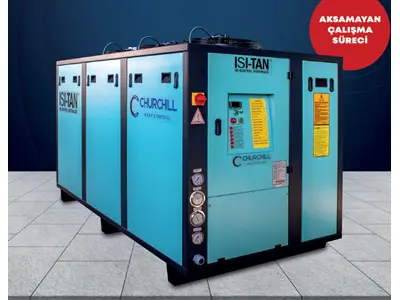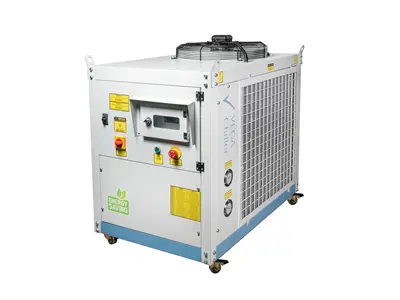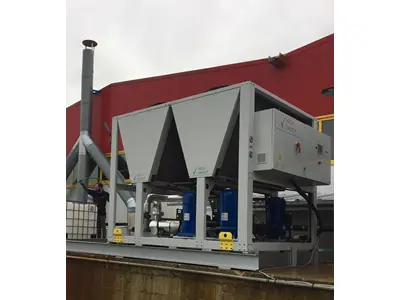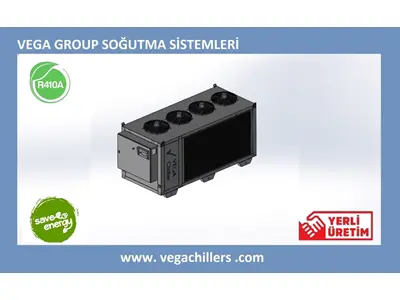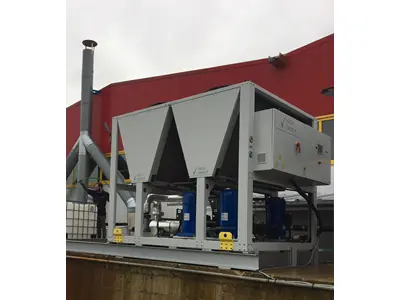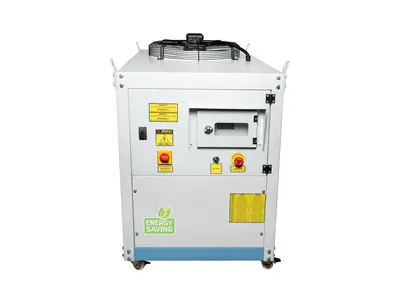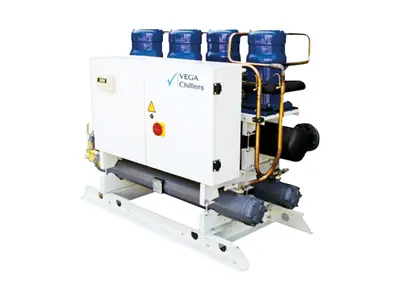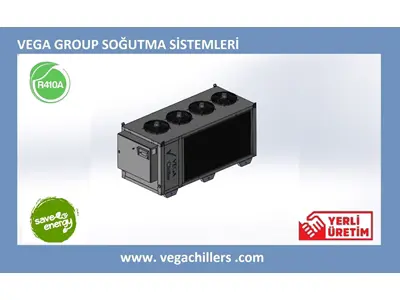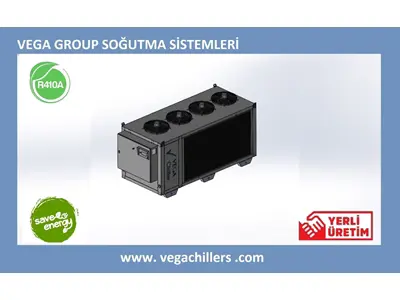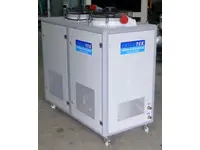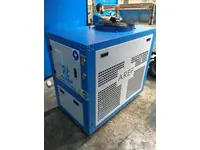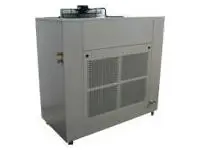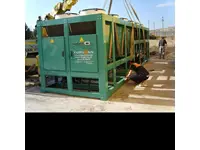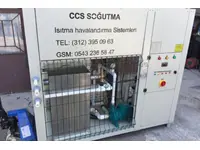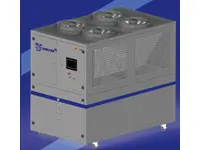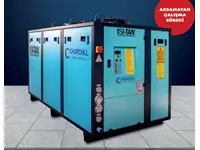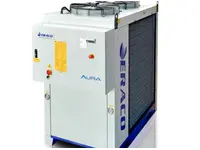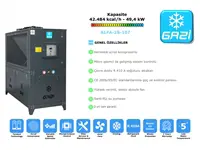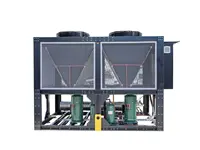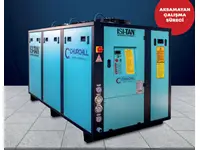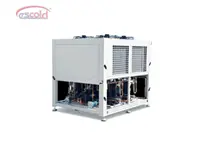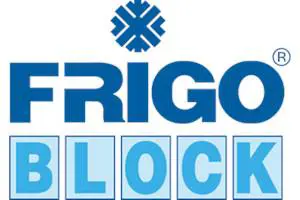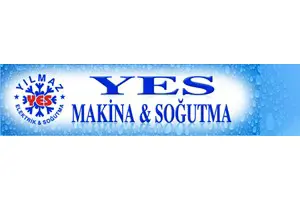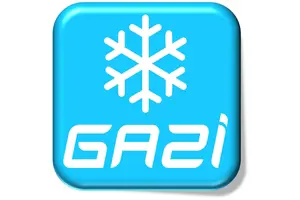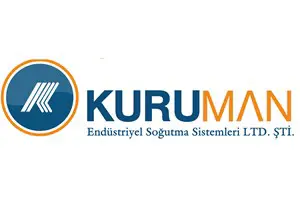Air Cooled Chillers Popular Products
What is Air Cooled Chiller and Where is it Used?
Air cooled chillers are used for cooling purposes. Chillers are typically used in large-scale industrial or commercial applications to provide temperature control. These machines, used for removing heat and cooling, contain a loop in which the refrigerant circulates. Air-cooled chillers remove the heat generated during this loop with the help of the surrounding air.
Air cooled chillers operate as a cooling system and are commonly used in large industrial facilities, commercial buildings, and hospitals. These machines are used to maintain or lower the desired temperature levels in processes or spaces.
Chillers typically absorb heat using a liquid, usually water or sometimes special refrigerants, and cool by using air to dissipate this heat. When the air-cooled chiller connection diagram is examined and as the name suggests, it dissipates heat using the surrounding air. The basic working principle is the compression of the fluid or refrigerant inside, increasing heat during the compression process with the help of a compressor. Then, this high-pressure and high-temperature gas is cooled in a condenser (heat exchanger) and turned into liquid form. Finally, the liquid refrigerant evaporates by lowering the pressure through an expansion valve, absorbing heat from the surroundings in the process. The evaporating refrigerant gas returns to the compressor and the cycle continues.
They are typically located outdoors and can provide cooling in large capacities. These types of chillers are preferred in areas such as cooling equipment used in industrial processes, cooling of large commercial buildings, cooling of data centers. Since outdoor air is used for heat dissipation, they can generally operate more effectively in cool and open areas. Air-cooled chillers remove the heat generated in the condenser by using the outside air. Therefore, they can operate without the need for a water source or cooling tower. However, they may show lower performance compared to water-cooled systems in terms of efficiency, as they depend on the external air temperature. These types of chillers can be used in a variety of applications, such as large building HVAC systems, industrial production facilities, hospitals, data centers, and more.
What is the Operating Principle of Air Cooled Chillers?
The operating principle of air-cooled chillers is fundamentally based on a vapor compression refrigeration cycle. This cycle is a process in which the refrigerant flows regularly within the system for the purpose of cooling, and there are important steps for the operating principle of air-cooled chillers to work without any problems.
- Evaporator: This step starts to lower the temperature of the area to be cooled. The low-pressure and low-temperature refrigerant enters the evaporator. In this section, the fluid absorbs heat from the area it surrounds (such as inside a building or an industrial area) and evaporates during this process.
- Compressor: The low-pressure and low-temperature gas leaving the evaporator is absorbed by the compressor. The compressor compresses the gas, increasing its pressure and thus its temperature. The compression process also increases the enthalpy (heat content) of the gas.
- Condenser: The high-pressure and high-temperature gas leaving the compressor enters the condenser. In this step, the gas condenses into liquid form. The condenser liquid releases the heat from the gas into the surrounding air as it cools.
- Expansion Valve: The high-pressure liquid leaving the condenser is reduced in pressure by a device called the expansion valve and returned to the evaporator to evaporate. At this stage, the temperature decreases along with the pressure of the liquid.
This creates a vapor compression refrigeration cycle in which these steps are repeated sequentially. Air-cooled chillers control the temperature of the area to be cooled using this cycle. Heat is absorbed and released by the refrigerant during the evaporation and condensation phase changes of the refrigerant during this cycle. The heat emitted during the condensation phase of the refrigerant in the condenser is carried away by the air, creating the desired cooling effect.
What Are the Types of Air Cooled Chillers?
Air-cooled chillers come in various types with different capacities, technologies, and applications to meet specific needs.
- Screw Compressor Chillers: Screw compressors are used to provide cooling in large capacities. They are commonly preferred in industrial facilities and large commercial buildings. They provide high efficiency and low energy consumption.
- Piston Compressor Chillers: These types of chillers operate using a piston compressor. They are commonly used in medium and large-scale facilities. Different piston arrangements and compression principles can be used to produce models of different capacities.
- Scroll Compressor Chillers: Scroll compressors are used to meet low and medium capacity cooling needs. They are commonly preferred in small commercial buildings, offices, and restaurants.
- Mechanical Valve Controlled Chillers: These chillers control the cooling capacity using mechanical valves. They are generally preferred as a simple and economical solution.
- Frequency-Controlled Chillers: These chillers adjust the cooling capacity by changing the compressor speed. This allows them to operate more energy efficiently under variable load conditions.
- Chillers Integrated with Cooling Tower: These chillers work together with a cooling tower to cool hot water. They are commonly seen in industrial facilities and large buildings.
- Multi-Circuit Chillers: Chillers with multiple circuits are used to meet different temperature requirements. Each circuit can operate at different temperature ranges.
- Modular Chillers: Modular chillers consist of several independent units and provide flexibility. Modules can be added or removed according to capacity requirements.
Among these types, there may be more customized options, and each of them can be best suited for specific applications and requirements. When making a choice, considering your needs in terms of capacity, energy efficiency, cost, and application requirements is important. Air-cooled chillers have more advantages compared to other chiller types. For example, water-cooled chillers, like Air Cooled Chillers, can also be among your options, but they are different system types that perform the cooling function and have different operating principles. If we list the differences between air-cooled chillers and water-cooled chillers:
- Cooling Method:
-
- Air-Cooled Chillers: They dissipate heat using the surrounding air. Heat transfer occurs through finned surfaces and fans in the chiller's condenser.
- Water-Cooled Chillers: Water-cooled chillers dissipate heat through water. They are used to cool hot water with a cooling tower or another water cooling system.
- Operating Environment:
- Air-Cooled Chillers: They are located outdoors and can generally operate more efficiently in cool and open areas.
- Water-Cooled Chillers: They are located indoors and may require a more complex installation depending on the water cooling system.
- Energy Efficiency:
- Air-Cooled Chillers: They may generally have lower energy efficiency compared to water-cooled chillers because the air cooling process may be less efficient.
- Water-Cooled Chillers: Water cooling provides more efficient heat transfer than air, so water-cooled chillers can generally be more energy efficient.
- Installation and Maintenance:
- Air-Cooled Chillers: Installation may be simpler because they do not require a water cooling system. However, factors such as dust and air quality can affect the performance of air-cooled chillers.
- Water-Cooled Chillers: Installation and maintenance may be more complex because they require a water cooling system. Additionally, water quality and operating conditions are important.
- Application Areas:
- Air-Cooled Chillers: They are more commonly preferred in outdoor and open areas. They are used in large industrial facilities, data centers, and commercial buildings.
- Water-Cooled Chillers: They are preferred in indoor environments and where water is easily accessible. They are used in large industrial facilities, hospitals, and some commercial buildings.
Air-cooled chillers and water-cooled chillers are different cooling systems preferred for different application requirements and operating conditions.
Air-Cooled Chiller Prices
Prices can vary depending on many factors, but these factors include the chiller's capacity, brand, technical specifications, production quality, energy efficiency, and additional equipment. Moreover, location, demand, and supply situation can also affect prices. When choosing air-cooled chiller selection, paying attention to these factors will be more efficient both financially and in terms of the benefits provided by the machine.
Generally, air-cooled chiller prices tend to be higher for chillers with higher capacities because they have greater cooling capacities. Similarly, chillers with higher energy efficiency generally come at higher prices, but they can provide energy savings in the long run.
Chiller prices can vary by country and region. Additionally, there may be differences between suppliers. The best approach to get specific information about chiller prices is to contact several different suppliers or manufacturers and request quotes. For this, you can reach companies that manufacture, sell, and provide after-sales support for chillers at the address https://www.makinaturkiye.com/hava-sogutmali-chiller-c-140146, ask your questions, get price quotes, and compare. Remember that chiller prices may include not only the machine itself but also installation, maintenance, and operational costs. Therefore, considering your budget and requirements is important to determine the best option.
